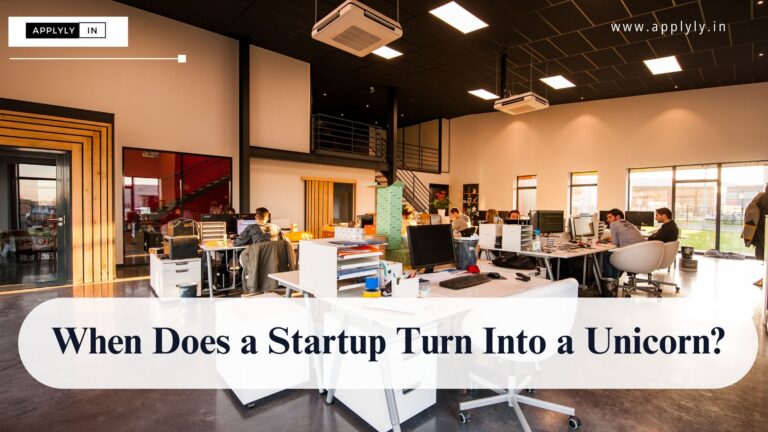Start a Business with No Money
Start a Business with No Money: Leverage AI
In the world full of entrepreneurs, you can also build your own business if you put in your time and effort into it. Sometimes, the process can be difficult due to issue in funds. But to start a Business with No Money can be achievable goal, especially when you leverage Artificial Intelligence (AI) and explore creative financing options. You can read the blog and see how you can leverage your business with no money with AI and creative financing.
Step 1: Generate Business Ideas
The first step to start a business with no money is coming up with a viable idea. AI can be of great help in this regard. You can use tools like ChatGPT or IdeaGenerator to brainstorm business ideas. Simply input your interests, skills, and any other relevant information, and these AI tools will generate a list of potential business ideas for you.
Step 2: Choose a Low-Cost Business Model
Not all businesses have to involve a lot of money to get up and running. Following are some really low-cost ideas you could consider:
- Content Creation: Provides content writing, blogging, or content creation services to online businesses.
- Freelance Writing or Blogging: Theseblogging businesses require very little more than a home base, a computer, and an internet connection.
- Virtual Assistant: Offer virtual assistant services, which might include email management, scheduling, and data entry.
- Social Media Manager or Consultant: Assist businesses in managing their social media presence.
- Online Course Creator or Tutor: Create and sell online courses; online tutoring.
- Dropshipping or eBay Reseller: Engage in dropshipping or resell products on eBay.
These businesses are ideal because they require minimal initial costs and can often be managed solo.
Step 3: Conduct Market Research
Thorough market research is essential before starting any business. Identify your competitors and determine how you’ll reach your target customers. Gather feedback from potential customers through focus groups or social media interactions. Use AI tools to analyze market trends and customer behavior to make informed decisions.
Step 4: Plan Your Business
AI-powered business planning tools make the process simple. Tools such as Upmetrics and Bizplanr offer AI-powered business planning, pitch deck creation, and financial forecasting. These libraries also house several sample business plans to begin with.
Step 5: Set Up Your Online Presence
A professional online presence is very important for any business. With tools like Hostinger AI Website Builder or Wix, you can easily create a custom website in a few clicks. Both have free plans that let you build websites without requiring any coding knowledge.
Step 6: Utilize AI Tools for Marketing and Automation
Several AI tools can help you manage marketing and sales efficiently:
- HubSpot Free CRM and Marketing Tools: Offers free marketing, sales, and customer service tools, including email marketing, lead tracking, and analytics.
- Zapier Free Plan: Automates tasks by integrating different apps and services. This can include automating email workflows, social media posts, and customer follow-ups.
- Mailchimp Free Plan: Allows you to send emails to up to 2,000 subscribers and includes features like email templates, automation, and analytics.
- Hootsuite Free Plan: Manages multiple social media accounts from one dashboard, with limited features but suitable for small businesses.
Step 7: Automate Customer Support
Customer support automation can help you deal with inquiries efficiently without necessarily increasing your workforce. Intercom uses AI to automate customer support and converse with customers through chatbots. It is a tool that assists in offering 24/7 support, guiding customers through processes, and answering queries.
Step 8: Content Creation and Optimization
AI can significantly aid in content creation and optimization:
- ChatGPT: Generate content ideas, write articles, and optimize existing content for better engagement.
- Jasper and Copy AI: Help in generating high-quality content quickly, including blog posts, social media updates, and marketing materials.
Step 9: Analyze and Improve
It is very important for any business to analyze and improve continuously. Utilize Google Analytics to track website traffic, user behavior, and conversion rates. Google Search Console helps monitor search engine rankings, impressions, and clicks.
Step 10: Creative Financing Options
There are several ways to finance a new business without having to spend any money yourself:
- Small Business Grants: These grants provide money to support entrepreneurship and do not need to be paid back. The SBA supports several community grant programs for small business growth and development.
- Crowdfunding: Platforms like GoFundMe, Indiegogo, and Kickstarter allow people to contribute money to campaigns in small amounts to help entrepreneurs launch their businesses.
- Microloans: The SBA’s microloan program allows you to borrow up to $50,000 to start a business, with interest rates ranging from 8% to 13%.
- Business Credit Cards: Offer a revolving line of credit, making it easier to manage the expenses needed to start or operate your business.
- Peer-to-Peer (P2P) Lending: Let you borrow money directly from individual investors instead of traditional financial institutions.
Step 11: Bootstrapping Techniques
Bootstrapping means using the resources you have at hand to fund your business. Here are some ways to bootstrap:
- Use funds in personal savings accounts or a certificate of deposit (CD).
- Borrow against your 401(k) or take an early withdrawal from an individual retirement account (IRA), though this comes with significant risks and penalties.
- Pull equity out of your home, but be aware of the risks involved.
- Sell items you don’t need for cash.
- Organize a local fundraiser to ask for donations.
- Ask friends and family for a loan.
Step 12: Leverage Free Resources
Utilize free resources available to help you start and grow your business:
- SBA Learning Center: Offers resources and educational articles on how to start a business.
- Small Business Development Centers (SBDCs): Assist small business owners with planning, accessing capital, and scaling for growth.
- SCORE: A network of mentors who help small business owners find success.
- U.S. Department of Veterans Affairs: Offers support to veterans interested in starting small businesses.
- National Women’s Business Council: Helps women entrepreneurs, particularly in STEM fields, get the capital they need.
Step 13: Network and Collaborate
Building the right relationships could get your business moving; network with local business associations like the Chamber of Commerce or SBDC. Networking may be done on LinkedIn to link up with other business owners or influencers in one’s niche. Collaborate and find free exposure for podcasts, YouTube channels, and social media platforms.
Step 14: Build a Robust Online Presence
Establishing a virtual presence is crucial in today’s digital age. Set up a website or blog using platforms like Wix. Create profiles on social media platforms like Facebook, Instagram, TikTok, or YouTube. Use AI to optimize your online content and engage with your audience effectively.
Real-Life Examples
Several successful startups began with minimal or no initial funding:
- Airbnb: Started as a simple air mattress rental service in a living room, Airbnb now is a global hospitality giant.
- Instagram: Founded by Kevin Systrom and Mike Krieger with no initial funding, Instagram was later acquired by Facebook for $1 billion.
- Dropbox: Drew Houston started Dropbox from his dorm room with minimal funding and turned it into a leading cloud storage service.
Conclusion: Start a Business with No Money
To start a business with no money requires creativity, hard work, and the right tools. By leveraging AI, exploring creative financing options, and utilizing free resources, you can overcome the initial financial hurdles and build a successful business. Remember to stay focused, adapt to changes, and continuously learn to ensure your business thrives in the long run.
Additional AI Tools for Marketing and Automation
Here are some more AI tools that can help in various aspects of your business:
Content Creation and Optimization
- WordLift: An AI-powered content optimization tool that helps improve SEO and user engagement.
- Content Blossom: Uses AI to generate high-quality content, including blog posts, social media updates, and more.
- Frase: An AI tool for content optimization, research, and generation.
Marketing and Automation
- Marketo: An AI-driven marketing automation platform that helps with lead scoring, email marketing, and customer engagement.
- Pardot: A B2B marketing automation tool by Salesforce that uses AI for lead scoring and nurturing.
- Mailshake: An AI-powered email outreach and automation tool.
Customer Service and Support
- Intercom uses AI to provide automated customer support. It engages with customers through chatbots, offering 24/7 support, guiding them through processes, and answering queries.
- Drift: An AI-powered chatbot platform for customer support and lead generation.
- ManyChat: A messaging platform that uses AI to automate customer interactions.
Analytics and Insights
- Google Cloud AI Platform: Offers various AI tools for data analytics, machine learning, and predictive insights.
- Mixpanel: An AI-driven analytics tool for understanding user behavior and optimizing customer journeys.
- Hotjar: Uses AI to analyze user behavior on your website and provide insights for improvement.
By leveraging these AI tools, you can streamline your marketing efforts, improve customer service, and gain valuable insights into your business operations.
Free Marketing and Automation Platforms
Here are some free or low-cost marketing and automation platforms:
Email Marketing
- Mailchimp Free Plan: Allows you to send emails to up to 2,000 subscribers and includes features like email templates, automation, and analytics.
- Sendinblue Free Plan: Offers unlimited contacts and up to 300 emails per day, along with automation and analytics features.
Social Media Management
- Hootsuite Free Plan: Manages multiple social media accounts from one dashboard, with limited features but suitable for small businesses.
- Buffer Free Plan: Schedules and posts content across various social media platforms, with limited features but free for up to three social media accounts.
Customer Service and Chatbots
- Botpress Free and Open-Source: Creates AI chatbots to engage customers and answer queries.
- Tawk.to Free Plan: Provides live chat software to interact with website visitors, with unlimited agents and chats.
By using these free tools, you can manage various aspects of your marketing strategy without incurring significant costs.
To Start a business with no money is challenging, but with the right strategy and tools, it is achievable. Focus on low-cost business ideas, leverage AI for marketing and automation, and explore creative financing options to get your business off the ground. Remember to stay adaptable and continuously learn to ensure long-term success.
You can read more information related to Startup advise, AI and startup news here.
Thanks





